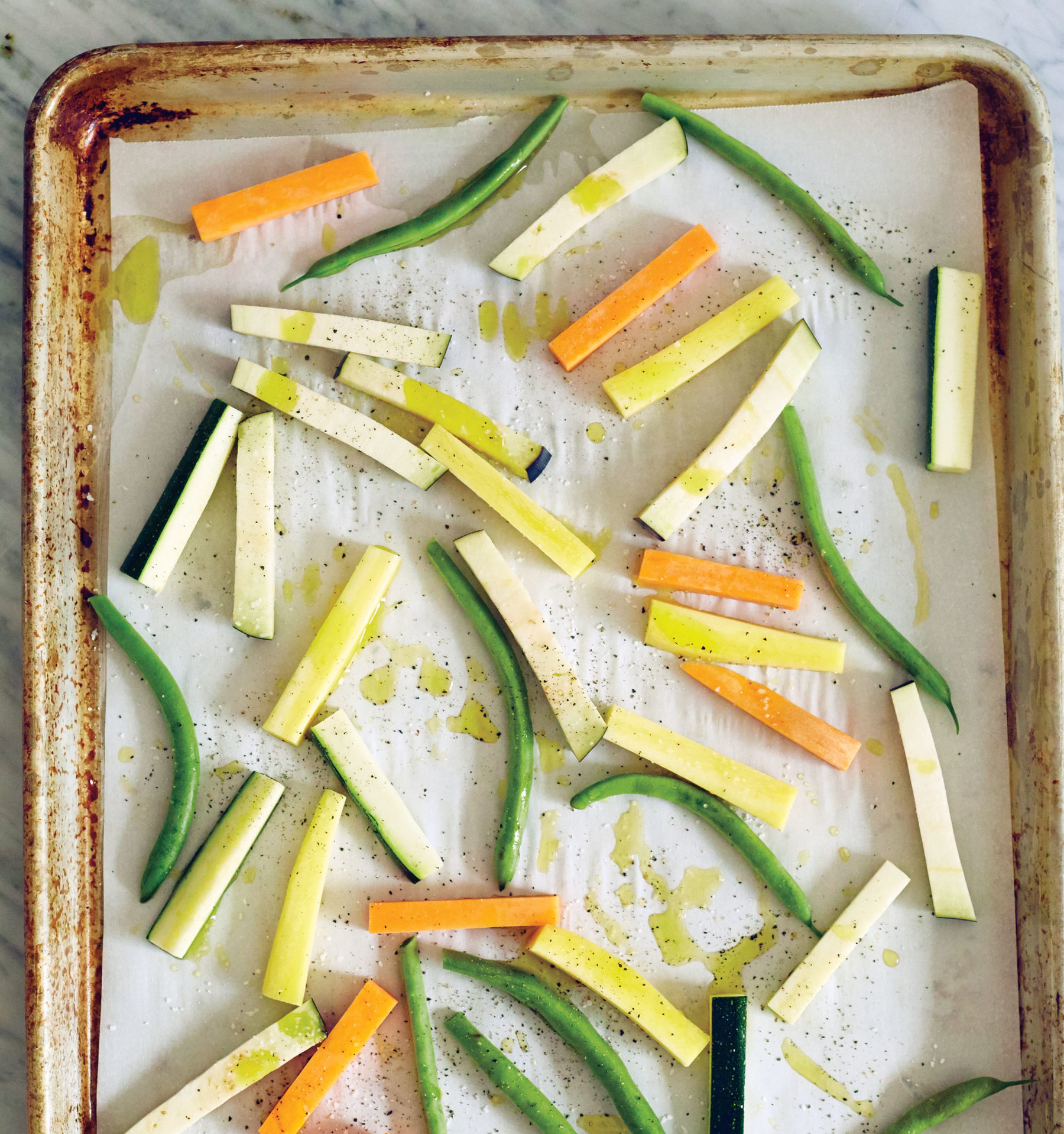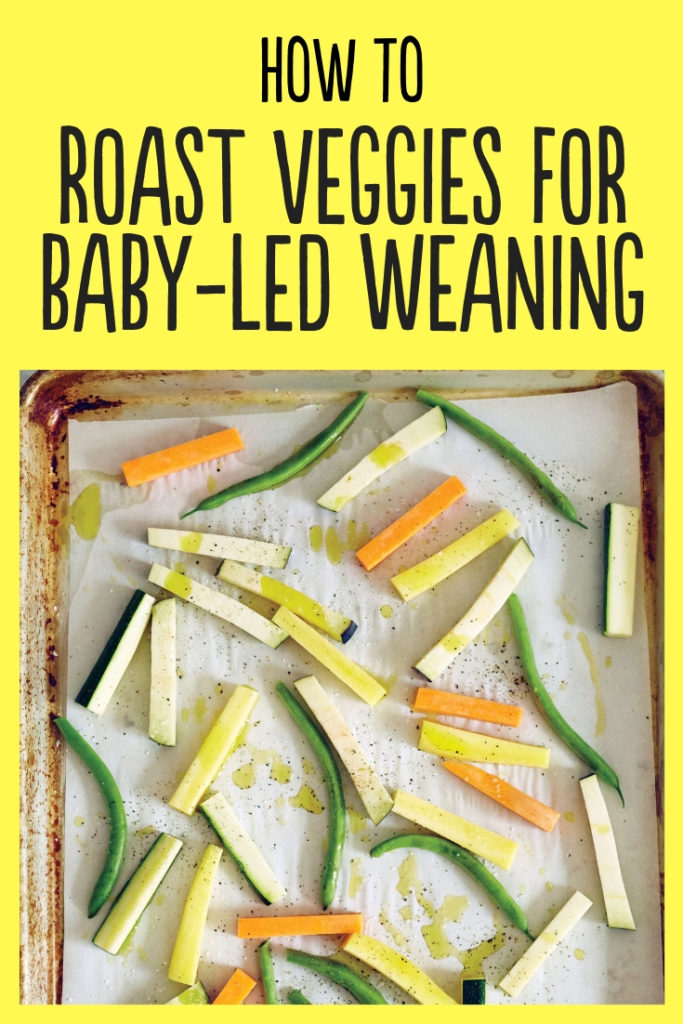
How to Roast Vegetables for Baby-Led Weaning
Whether you’re practicing baby-led weaning (or baby-led feeding as I like to call it), or just want to add more finger foods to your baby’s meals, roasted vegetables are a great option for lots of reasons.
First, they’re vegetables! Yay! Everyone needs more veggies in their diet, including most babies. As you probably know, vegetables are a stellar source of nutrients, antioxidants, and fiber.
Second, the more you expose your baby to veggies, the more likely she is to appreciate and accept them as she grows up. Now, this isn’t a guarantee just because your 9-month old likes roasted carrots that your 3 year-old or 6 year-old will like roasted carrots. But, you’ll have a better shot.
Third, roasting is a smart way to serve vegetables to eaters of any age. Roasting brings out the sugars in veggies, making them sweeter and more delicious.
And, finally, roasting is an easy way to get veggies the appropriate texture for self-feeding. Remember, you want to be able to smush (that’s a technical term) your baby’s food with gentle pressure between your thumb and forefinger. Any harder and it could be a choking hazard.
How to Roast
To roast, preheat the oven to 425°F and line a baking sheet with parchment paper. Cut the vegetable into roughly equal-sized pieces so they will cook at an even rate. Aim for pieces about the size and shape of your pinky finger so babies will be able to grasp them. Toss the veggie with olive oil. Lay the veggies in a single layer on the baking sheet. If the sheet is too crowded or the veggies overlap, they will steam, not roast, and that delectable browning won’t occur. Roast until tender and browned; the time will vary based on the vegetable. (Approximate times are in parentheses below.) Cool and serve, or refrigerate.
Veggies that are champion roasters:
- Carrots (35 minutes; see tip below)
- Parsnips (35 minutes; see tip below)
- Broccoli (25 minutes)
- Cauliflower (30 minutes)
- Zucchini and summer squash (30 minutes)
- Butternut squash (30 minutes)
- Eggplant (25 minutes)
- Green beans (25 minutes)
- Potatoes (35 minutes)
- Sweet potatoes (35 minutes)
- Asparagus (15 minutes)
- Brussels sprouts (25 minutes; see tip below)
How to Roast Carrots, Parsnips, and Brussels Sprouts
Some veggies–like carrots, parsnips, and brussels sprouts–benefit from an extra step to become perfectly tender. Before roasting cover the sheet pan tightly with aluminum foil. Roast for 15 minutes, remove the foil, and then continue roasting until tender and browned. Using the foil to start steams the veggies, helping them become perfectly tender throughout.
How to Add More Flavor to Roasted Veggies
Olive oil-roasted vegetables are already delicious, but you can mix up the flavors by adding one of more of these herbs and spices: freshly ground pepper, cinnamon, dried oregano, ground cumin, Italian seasoning, and curry powder.
What about salt? When you’re cooking exclusively for your baby skip the salt. Baby’s kidneys have a hard time processing excess sodium. But once your baby isn’t a baby anymore, I do recommend adding kosher salt before roasting. Salt helps tame bitterness and bring out sweetness, making veggies more palatable for everyone.
After roasting, a squeeze of lemon and/or a sprinkle of grated Parmesan cheese is virtually always welcome.
Find more finger food ideas in Baby-Led Feeding. Looking for even more baby-led weaning ideas and family feeding tips? Sign up for my newsletter! When you sign up, I’ll send you three of my favorite healthy smoothie recipes for the whole family. I look forward to being in touch!


